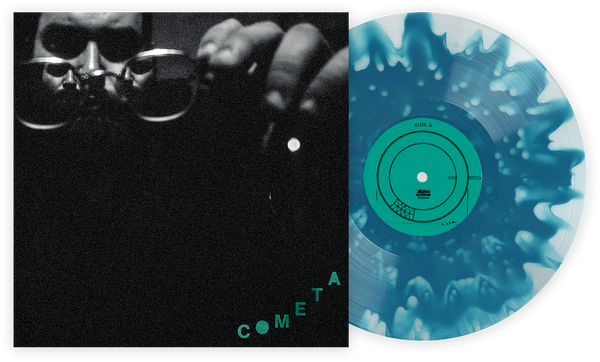One of the stated advantages of separate audio components is that they give you the choice of exactly the component you think is right for you at every point of sound reproduction. This is a fine ideal… but just because you can do this doesn’t necessarily mean that the results are going to be brilliant. Nowhere is this more of an issue than it is with amplifiers and speakers. While it is possible to combine many different amps with many different speakers, not all of these combinations are going to work as well as you might hope. Surely there has to be a better way?
One way around this is to combine the amplifier and the speaker into a single unit. If the same designer has been involved in the creation of both components, they should have the right qualities to work together. At the same time, the idea is appealing on a cosmetic and design level because it allows for two boxes to be combined into one, saving space and very often some money too. The results of doing this are generally referred to as powered speakers and active speakers. While some manufacturers are a little naughty and interchange those terms, they are not the same. So what are the differences?
A powered speaker is the more commonly encountered of the two types. This is a normal speaker to which an amplifier has been added to the same chassis. This amplifier is usually a complete integrated unit with a volume control and an input board making the speaker completely self-contained. The speaker itself is still a conventional unit with one or more drivers with a crossover to control them and if you scooped the amplifier out, you could technically connect a completely different one in its place.
While a number of powered speakers look like an ordinary box speaker design—companies like Audioengine produce a large range of such models—the most common category for these designs is the massive growth area of wireless “smart” speakers from Sonos and its many imitators. These speakers are designed to receive network and Bluetooth audio signals but many of our members have found them to be excellent partners for turntables via their analogue inputs.
It’s easy to see why powered speakers appeal. Instead of having to accommodate multiple boxes, you only need to find room for your speakers (or simply speaker) and whatever source equipment you want to connect to it. Cabling is a simple matter of connecting that source equipment directly to the speaker. If you have a stereo pair of powered speakers, you will likely connected your equipment to one of the speakers and then connect to the second speaker via a run of speaker cables. With two speakers rather than one, you have the option to position them in such a way as to secure a decent stereo image .
The drawback of a powered speaker in technical terms is simple enough. While it is rare for a company to choose an amplifier that is completely unsuited to the task being asked of it, the relationship between the two units is still the same as it is in a normal system—an amp acting into a speaker. The true ideal of an amplifier perfectly matched to a speaker is only being partially achieved here.
To fully realize the ideal of an amp perfectly mated to a speaker, you will need to look at an active speaker. The crucial difference between an active and a powered design is the crossover—the system of sending the right frequencies to the right speaker. In an active speaker, the crossover is a powered design and is placed in front of the amplification. Each driver in the speaker has its own amplifier and in almost all cases, the amplifier has been designed to mate with that driver in such a way as to ensure that the speaker cannot be overdriven. This is a more expensive thing to do than simply placing an amp in the same cabinet as the speaker and prices reflect that.
The design of active speakers also means that they generally only contain the power amp section of an amplifier. They will need to be connected to some form of preamp to be properly controlled and this additional equipment needs to be accommodated. They will also need to have power and signal sent to both speakers which needs to be taken into account when you place them in a room.
This is a considerable amount of effort, but there are reasons why active speakers can be worth seeking out. The careful matching of crossover, amplifier and speaker can result in a fantastically cohesive performance that can be almost impossible to achieve by choosing separate components. Active speakers can be driven extremely hard without there being any danger of damaging components and in correctly designed examples, you should find that an active speaker has better bass performance than a passive speaker of the same size. Some companies have become masters at making active speakers and the sound they are capable of is absolutely sensational.
So what are the downsides? With both passive and active speakers, the biggest issue besides the initial cost of purchase is that you are reducing the flexibility you have in the future to make any changes. If you don’t like the sound of your conventional amplifier and speakers, you have the option of changing either the amp or the speakers to bring the sound toward your notional ideal. With powered speakers in particular, this really isn’t an option—you either learn to like it or change the whole thing. With active speakers, you also need to make sure you have the inputs and connections you need to connect your turntable and other source equipment. Many active speakers used in the pro audio category will use balanced connections and you may need to invest in specialist cables to make it work with a domestic preamp.
Even allowing for these caveats, many listeners will find that the sheer performance offered by active speaker systems is sufficiently far in advance of what they have achieved by matching amplifiers with passive speakers. If you are looking choosing amps and speakers and realising that this is a minefield you don’t want to get stuck in, this might be just the solution you have been looking for.
Ed is a UK based journalist and consultant in the HiFi industry. He has an unhealthy obsession with nineties electronica and is skilled at removing plastic toys from speakers.
Join the Club!
Join Now, Starting at $36Pages












